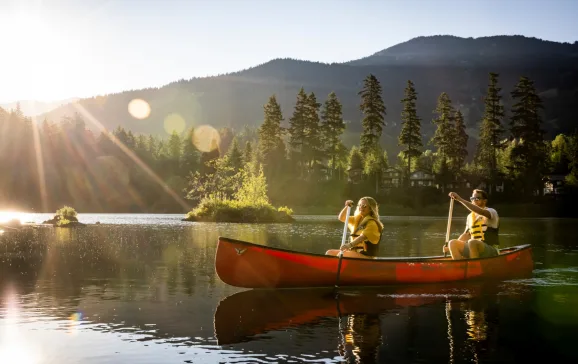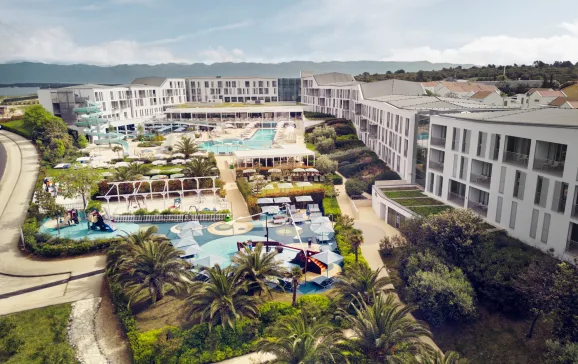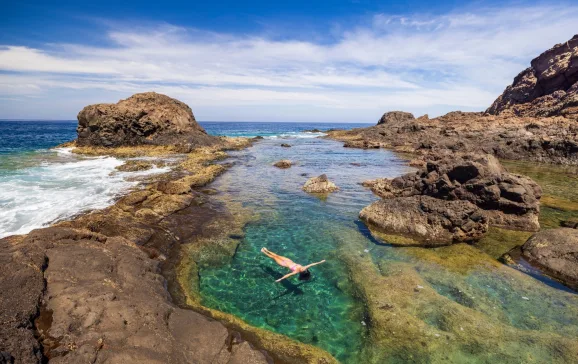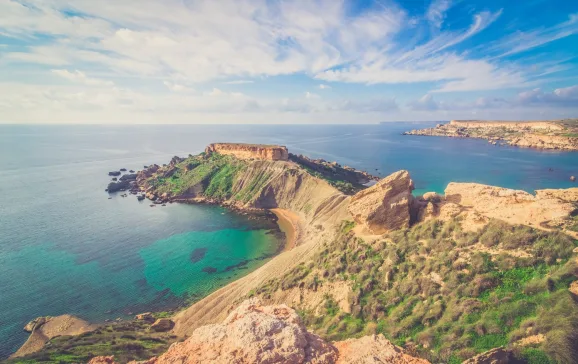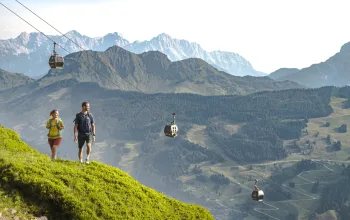Out of the thick forest ahead of us appears a man carrying an axe and a machete. In most places there would be little doubt he’s a lumberjack, but here in Guatemala you can’t be so sure.
We were told before we started climbing this volcano that armed bandits operate in the area but had passed it off as merely a scare story. Suddenly, we’re thinking there might have been some truth in it.
I reach for my camera, naively thinking that grabbing hold of it will deter the man from robbing it, but by the time I pull it close, his face opens out into a wide smile and he calls out, “Hola, que tal?”
We greet him back in pidgin Spanish and continue on up the hill, rolling our eyes in embarrassment as we walk.
Thirty minutes later, the forest is still as dense as it was when we started climbing two hours ago and patience is starting to wear thin, but after a few steps more, the trees at last begin to recede to reveal a cluster of exposed rocks that are unmistakably the 3,020m summit of Volcan San Pedro.
We clamber up on to the flattest of the exposed rocks to find, about kilometre below us, the entirety of Lago de Atitlan, a city-sized lake that is unquestionably one of the unsung jewels of the Americas.
With nothing but the odd wisp of cloud to block out the early-morning sun, the water is glowing almost exactly the same shade of bright blue as the sky, creating a solid wall of colour that in turn bleaches the green of the surrounding landscape. ~
Sizeable towns we passed through yesterday now seem impossibly small as they cling to the water’s edge, while boats crossing from one shore to another have become little more than tiny, almost indistinguishable dots.
To the immediate east we can see Volcan San Pedro’s near neighbours, Volcan Toliman and Volcan de Atitlan, while in the distant north-west we can pick out the rugged peaks of Guatemala’s highlands jutting high up into the pristine blue sky.
It’s still early in the dry season and the air is cool up at this altitude, but the nip of the light wind is barely noticeable in the face of such a tranquil and relaxing view.
Onwards and upwards
The temptation to stay and drink it in all day is difficult to resist, but we are on a tight three-week itinerary and still have much ground to cover.
My friend and I are travelling across Central America from Guatemala to San Jose in Costa Rica, climbing as many volcanoes and mountains along the way as we can and there is consequently little time to dwell.
Central America forms part of the Pacific Ring of Fire and is littered with volcanoes as a result. They form a great chain the best part of 1,500km long down the spine of the continent, bisecting Guatemala, El Salvador, Honduras, Nicaragua and Costa Rica.
Volcan San Pedro is the easiest climb on our list of targets, and after scampering back down to the lively town at its foot, San Pedro la Laguna, we reluctantly leave the serenity of Lago de Atitlan behind to make the two-hour journey to the city of Quetzaltenango for a far greater challenge.
Xela, as Quetzaltenango is more commonly known, is the hub for all trips to Guatemala’s biggest mountains and volcanoes, and although there are plenty to choose from, most people are lured to Volcan Tajamulco, which at 4,220m is Central America’s highest peak.
We make our two-day ascent with the not-for-profit organisation Quetzaltrekkers, who help offset costs by ferrying you to the foot of the climb on public buses and then ask you to carry a fair share of the equipment, whether that be cooking utensils or parts of tents.
The opening day of the climb is the shortest but hardest, as it is here that you break the back of the mountain by rising up 1,000m from the town of San Marcos to a flat shelf 200m below the summit, where overnight camp is made.
The views have been shrouded in mist all day but by the time we reach the shelf, the clouds part just enough to unveil a tantalising glimpse of distant volcanoes on the horizon before the sun sets and we return to camp.
The next morning we set off at 4am to negotiate the steep final ramps of the ascent and ensure we are on top well before sunrise. Peeling yourself out of the hard-won warmth of a down sleeping bag always seems complete madness but this time the sky is almost perfectly clear and the spectacle waiting for us at the summit makes the early rise more than worthwhile.
This daily lightshow starts with the sun peering over the horizon immediately next to the side-by-side volcanoes of Acatenango and Fuego, silhouetting both peaks against the deep orange of the early-morning sky just as the latter make its once-in-every-45-minutes eruption of smoke.
The sky seems to glow every citric colour of the spectrum until the sun finally breaks free from land and starts illuminating the rolling hills surrounding Tajamulco, vividly picking out their rocky summits and forested flanks.
After an hour and a half and what feels like a thousand photos at the summit, we descend all the way back down under a now scorching sun with Tajamulco’s summit dome now behind us and the seemingly endless highlands of Guatemala stretching out ahead into the distance.
We return to Xela late in the afternoon and then prepare to move on to our next volcano the day after. There are volcano summitting options in Honduras, but we instead choose to head to El Salvador to climb Volcan Santa Ana, which lies about 60km west of the capital, San Salvador.
Using the neighbouring town of Santa Ana as our base, the one-day hike starts with an early-morning bus to the gates of the national park in which the volcano sits.
After paying a nominal park entrance fee, guides arrive at mid-morning every day to lead climbers up the three-hour ascent. They are volunteers and although their English is limited, the only money they ask is a tip at the end.
The three-hour ascent is hot but straightforward and takes us from the grassy flanks of Lago de Coatepeque up on to the scree-covered shoulders of the volcano itself.
As we near the top, cloud cover rolls in and blocks out views of neighbouring peaks, but we’re amply compensated by Santa Ana’s truly stunning summit crater.
Probably about 1km in diameter, this crater is so vast that scale is almost impossible to comprehend, but the real beauty lies in a turquoise lake that sits in the centre. Even on an overcast day the colour is striking against the boneyard appearance of the steep crater sides, so on a sunny day it must be even more impressive.
Nicaraguan highs
We spend the next day enjoying the lively street markets of San Salvador, before leaving El Salvador and making our next stop in Leon, a bustling colonial town in the north-west of Nicaragua from which we plan to embark on our second two-day climb of the trip and fourth in total.
Volcan Telica lies an hour from Leon and could easily be rolled into one day with an early start, but we opt for a two-day trip with another not-for-profit company, Sonati Tours, which makes for a more leisurely and enjoyable ascent that also enables us to see both sunset and sunrise on the top.
As at Tajamulco, the first day of ascent is spent hiking steeply up to a flat clearing just below the summit, only this time we climb for three hours in the soaring temperatures and high humidity of Nicaragua rather than the chill of Guatemala.
Sweat streams off the ends of our noses like a dripping tap and it is a relief when a farmer passes by with a trailer full of freshly picked melons and agrees to sell us a couple to share between us.
Thankfully the trail is covered by trees for the most part but opens out just before the clearing to allow the most aesthetic of the four summits we have seen so far to appear.
Whereas San Pedro is a largely green volcano and Tajamulco and Santa Ana both grey, Telica is a deep ceramic red and has smoky gases billowing constantly out from its 500m-wide crater.
We reach the clearing by mid-afternoon and after making camp and devouring dinner, we head up to the crater rim to take in sunset.
Although Telica is only 1,061m tall, it is still high enough to offer shoulder-to-shoulder views of the neighbouring peaks that help make up a 60km belt known as the Maribio Volcanoes, the closest of which glows a soft orange as the last of the setting sun bathes them in its rays.
Once dark, we turn our attention to the pit of the crater and the multiple pools of lava bubbling and hissing hundreds of metres below, a sight and sound that leaves you feeling like the whole thing could erupt at any time.
The spectacle over, we walk the short way back to camp to talk the night away in front of an open fire and then return to the crater edge at sunrise the following morning to see the landscape from a similar, yet very different perspective from the night before.
This time the sun emerges from behind the volcanoes, silhouetting each one on the horizon before later bringing light to the lush green lowlands that stretch west to the Pacific coast and east to the Atlantic.
Paradise (soon to be) lost?
We remain in Nicaragua for our intended next climb of Volcan Concepción, which is one of two volcanoes that make up the island of Ometepe on Lago Nicaragua. Unfortunately low cloud and recent heavy rain has made the ascent hazardously muddy and futile given that there will be no views.
Instead we explore the island by bicycle, sampling its quiet villages and natural habitats before they are fundamentally changed forever – by the building of a new canal across Nicaragua.
The canal, on which construction work has already started, will be both deeper and wider than the Panama Canal to the south and will slice straight through Lago Nicaragua, whose days as a freshwater lake will therefore be numbered. If ever there was a time to visit beautiful Ometepe island, it is now.
We could easily stay longer but time is now running tight and we still have potentially our toughest mountain climb to come, Cerro Chirripo in Costa Rica.
Chirippo is a 3,727m high mountain – not a volcano – located at the heart of the Parque Nacional Chirripo and is usually climbed over two days, with a night spent in between at the Crestones Lodge, which sits roughly two hours’ walk below the summit.
However, beds are hard to come by unless you book weeks in advance, so we opt to tackle the 39km round trip – including 2,300m of vertical ascent and the same in descent – in a single day.
Having gone through the arduous process of obtaining a permit to climb, we set off from the village of San Gerardo, located on the edge of the national park, at just after 2am in order to ensure we give ourselves plenty of time to be back before sunset, which happens abruptly at 5pm at this latitude.
We have negotiated the first 14km to the lodge by 7am and, after a short stop for breakfast, we reach the summit by mid-morning. The views from the top should be fine and far-reaching over the highest range in the country, but we have caught the back end of Costa Rica’s wet season and daylight brings with it only low cloud and torrential rain.
With the wind also battering us, we stay only a few minutes at the soaking summit before descending all the way back down at a breakneck pace, getting drenched as the deluge shows no sign of letting up.
Over beers back in San Gerardo we laugh ironically at how 12 hours of hard slog has yielded so little reward. But over the course of three weeks we can have few complaints about the amazing sights we have seen.
Central America may be small when compared to North or South America but the landscape changes markedly from one country to the next, and if you’re looking for challenging and varied hiking with a vibrant culture interspersed in between, there are few places in the world to match it. Just go now, before it changes forever.








